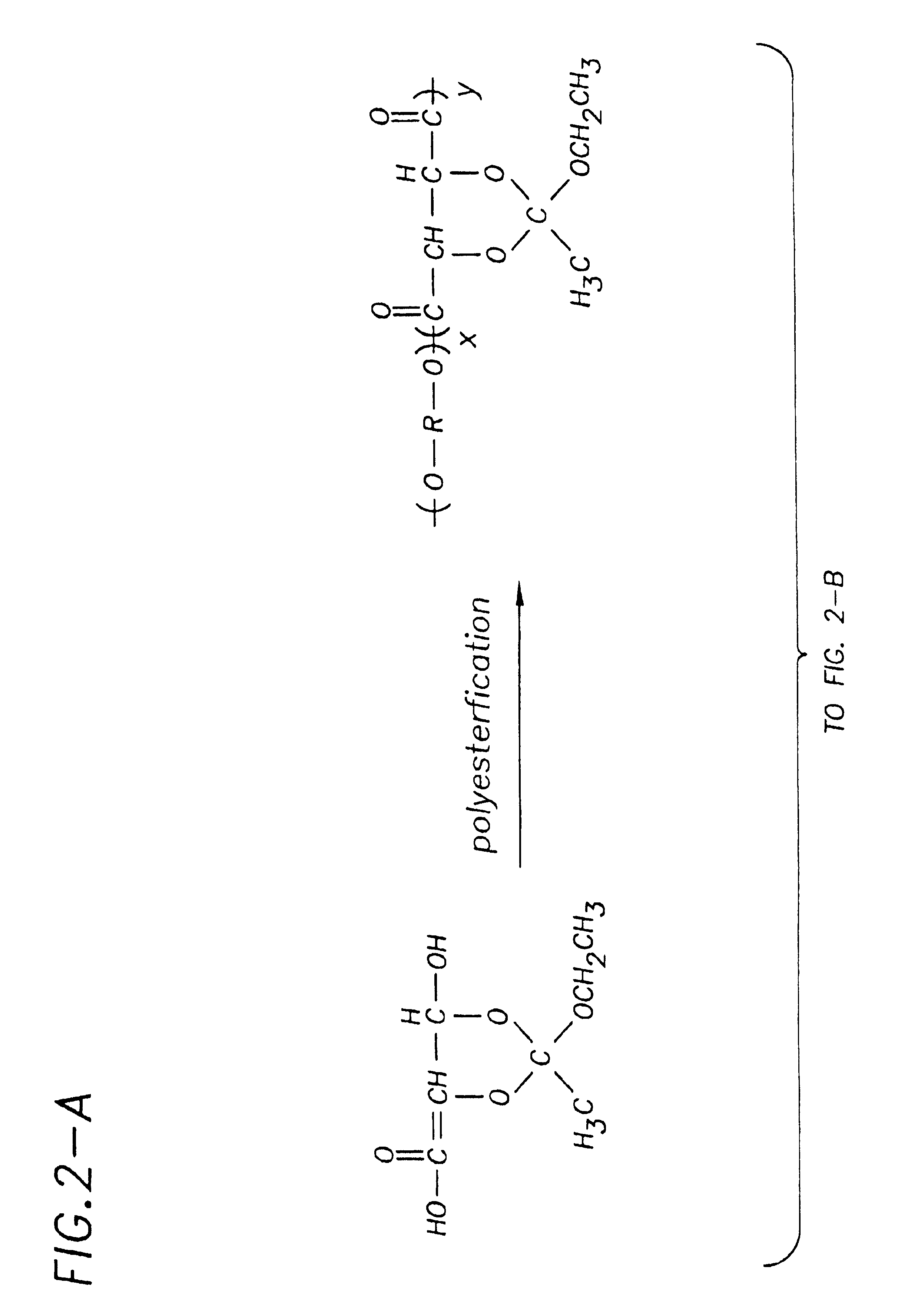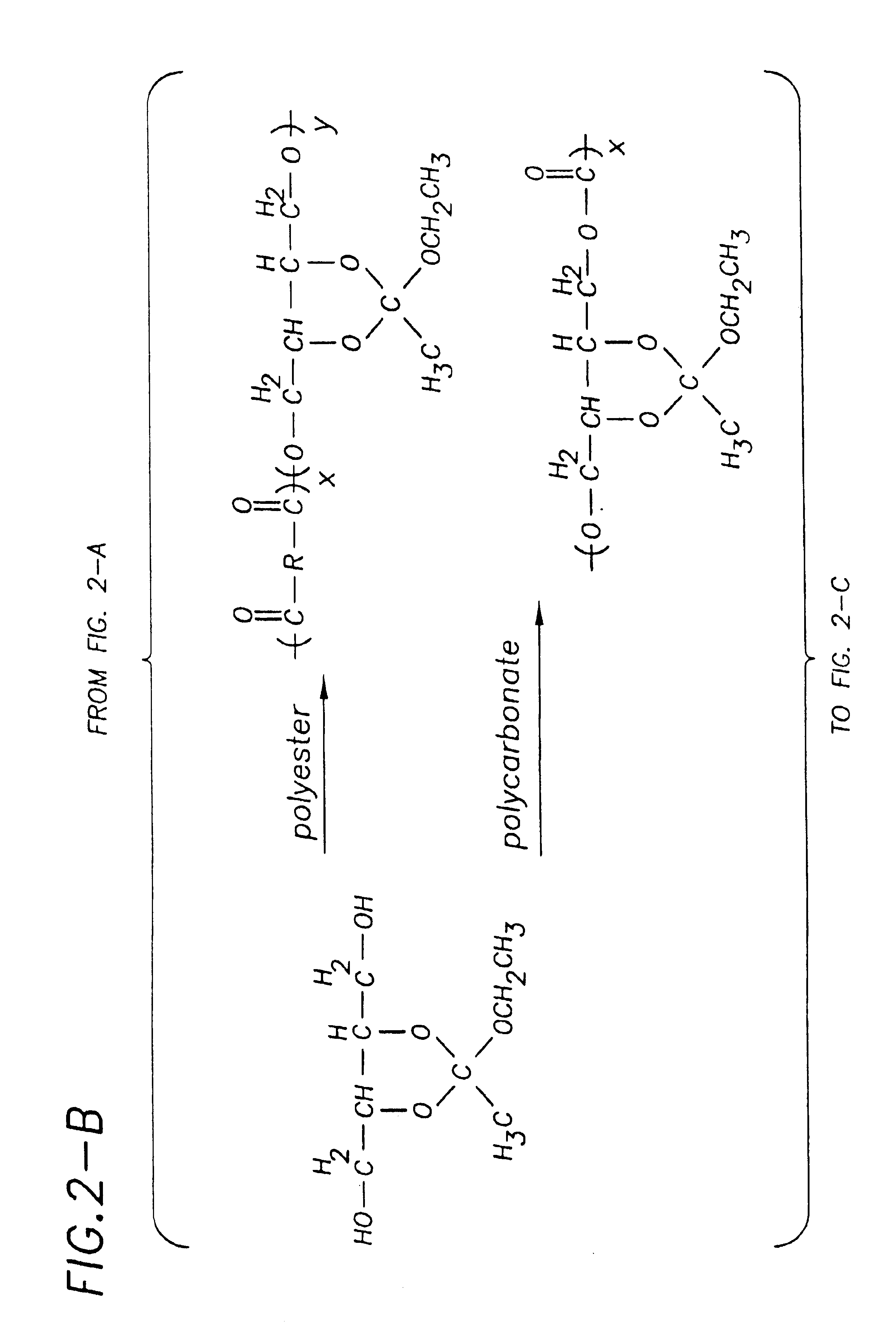Endosomolytic agents and cell delivery systems
- Summary
- Abstract
- Description
- Claims
- Application Information
AI Technical Summary
Benefits of technology
Problems solved by technology
Method used
Image
Examples
example 1
[0091]Synthesis of N-[2-methyl-1,3-propanediol]methacrylamide: The synthesis of this monomer precursor (1) was performed using a previously described method (Medlinski, Z. and Paprotny, J. Roczniki Chemii 1966, 40, 1487). The compound was obtained by acylating 2-amino-2-methyl-1,3-propanediol with methacryloyl chloride at −10° C. in acetonitrile for 24 hours. Following reaction, the product was isolated and purified by repeated recrystallization from acetonitrile to yield the product in 25% yield, melting point 101° C.-102° C. (lit. 102° C.-103° C.); Elemental Analysis Calc: C: 55.5%, H: 8.7%, N: 8.1%; Found: C: 55.2%, H: 8.7%, N: 8.0%
example 2
[0092]Synthesis of N-[2-methyl-1,3-O-ethoxyethylidine-propanediol]methacrylamide: This monomer is synthesized by reaction of (1) with triethylorthoacetate using a previously reported method (Miller, V.; Yang, D.; Weigel, T.; OHan, O.; Liu, H.; J. Org. Chem. 1989, 54, 4175). Briefly, (1) suspended in dichloromethane is reacted for 24 h with triethylorthoacetate in the presence of a catalytic amount of p-toluenesulfonic acid. The solvent is then removed by rotoevaporation and the product is isolated and purified by repeated recrystallization from acetone.
example 3
[0093]Polymer synthesis: Monomer (2) described above and 2-[dimethylamino]ethyl methacrylate (3) (purchased from Aldrich Chemical Company and purified by distillation) are polymerized by free radical polymerization under various conditions using a fractional factorial experimental design. In this method, the initiator type, monomer / initiator ratio, polymerization temperature, polymerization time, polymerization solvent, and comonomer ratio have been chosen as the variable parameters for polymerizations. These parameters are known to most greatly influence the final properties of the polymer (Billmeyer, F. W. Textbook of Polymer Science, John Wiley and Sons, 1984). Because it is essential that the polymers used for the structure activity relationship determinations have their exact chemical makeups known, the polymers resulting from the above series of experiments are rigorously conducted. The monomer molar ratios and structural determination of the polymers are conducted using 1H an...
PUM
| Property | Measurement | Unit |
|---|---|---|
| Size | aaaaa | aaaaa |
| Density | aaaaa | aaaaa |
| Hydrophobicity | aaaaa | aaaaa |
Abstract
Description
Claims
Application Information
 Login to View More
Login to View More - R&D
- Intellectual Property
- Life Sciences
- Materials
- Tech Scout
- Unparalleled Data Quality
- Higher Quality Content
- 60% Fewer Hallucinations
Browse by: Latest US Patents, China's latest patents, Technical Efficacy Thesaurus, Application Domain, Technology Topic, Popular Technical Reports.
© 2025 PatSnap. All rights reserved.Legal|Privacy policy|Modern Slavery Act Transparency Statement|Sitemap|About US| Contact US: help@patsnap.com



